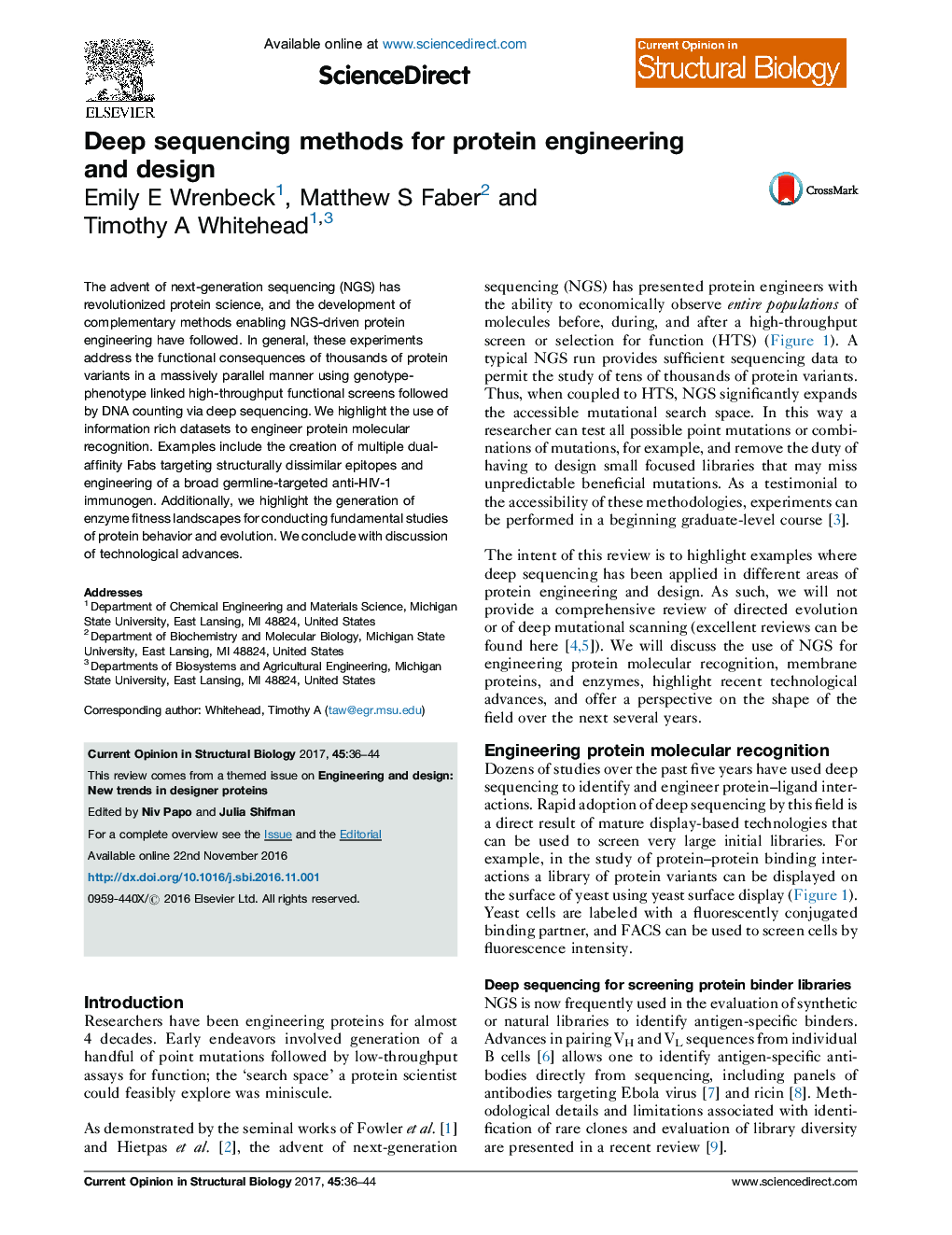| Article ID | Journal | Published Year | Pages | File Type |
|---|---|---|---|---|
| 5510824 | Current Opinion in Structural Biology | 2017 | 9 Pages |
•Deep sequencing permits examination of local protein fitness landscapes.•NGS aids in engineering affinity and specificity for protein molecular recognition.•Application to enzymes is limited by paucity of functional selections.•NGS enables fundamental studies of enzyme behavior and evolution.•Gene tiling and molecular barcoding extend NGS to full-length proteins.
The advent of next-generation sequencing (NGS) has revolutionized protein science, and the development of complementary methods enabling NGS-driven protein engineering have followed. In general, these experiments address the functional consequences of thousands of protein variants in a massively parallel manner using genotype-phenotype linked high-throughput functional screens followed by DNA counting via deep sequencing. We highlight the use of information rich datasets to engineer protein molecular recognition. Examples include the creation of multiple dual-affinity Fabs targeting structurally dissimilar epitopes and engineering of a broad germline-targeted anti-HIV-1 immunogen. Additionally, we highlight the generation of enzyme fitness landscapes for conducting fundamental studies of protein behavior and evolution. We conclude with discussion of technological advances.
